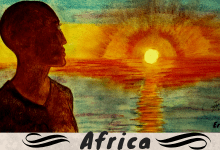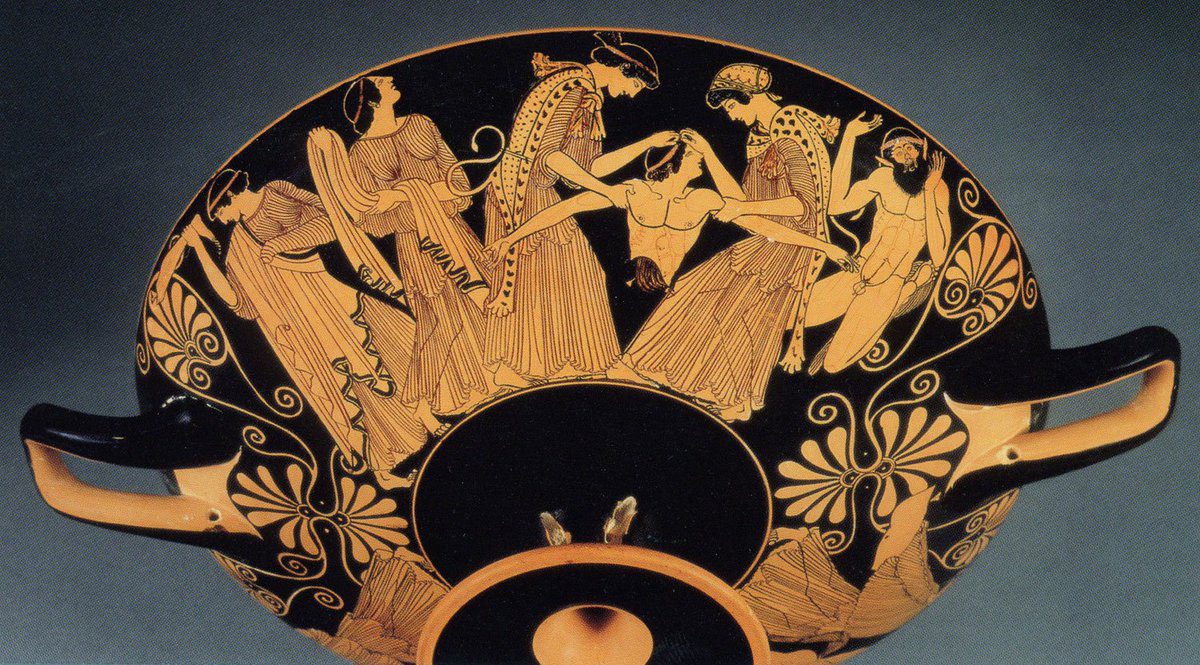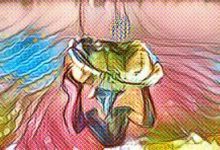Tirthankar’s interesting research paper focusses on Soyinka’s adaptation of The Bacchae of Euripides and seeks to reread this play alongside Mukta-dhara (‘Free Current’) by Tagore. The author of the famous poem on Africa in Bengali, in which the Indian poet resents the colonial oppression of the African people, Tagore did not live to witness the resurgence of the African nation and its struggle to overcome Apartheid. Soyinka, on his part, also does not seem to have been influenced, even remotely, by the Indian philosophy of life. It still seems intriguing to note some correspondence between these two plays, traceable, ultimately, to a faith, shared by the two poets, in the inevitability of the triumph of the human spirit over the deadening powers of tyranny. A Different Truths exclusive for the Special Issue on Africa.

In his article, Third –World Drama: Soyinka and Tragedy, Andrew Gurr speaks of the ‘statis’, the inviolate order of cosmic harmony that tragedy upholds. The sense of waste, which the spectacle of tragic suffering generates in the mind of the audience, is accommodated, in the end, in the ‘quietist wisdom’ of religion. ‘This again is stasis,’ writes Andrew Gurr, ‘acceptance of an ordained status quo’. (Gibbs 143) There are, however, subtle and insidious ways in which drama can sometimes become, even while remaining rooted in a traditional world- view, a radical instrument of change. The present paper is focused on Soyinka’s adaptation of The Bacchae of Euripides and seeks to reread this play alongside Mukta-dhara(‘Free Current’) by Tagore. It is not my purpose to assume indebtedness on either side. The author of the famous poem on Africa in Bengali, in which the Indian poet resents the colonial oppression of the African people, Tagore did not live to witness the resurgence of the African nation and its struggle to overcome Apartheid. Soyinka, on his part, also does not seem to have been influenced, even remotely, by the Indian philosophy of life. It still seems intriguing to note some correspondence between these two plays, traceable, ultimately, to a faith, shared by the two poets, in the inevitability of the triumph of the human spirit over the deadening powers of tyranny.
Commissioned by the National Theatre of the Old Vic in 1973, Soyinka undertook to adapt the Euripidean tragedy to the political realities of Nigeria. The play reflects his bitter memory of having to contend with the military rulers of his country on the issue of a Biafran state, and of being made to undergo two years’ solitary confinement. ‘It is against this slice of contemporary reality’, writes Albert Hunt, ‘ that Soyinka’s version of Euripides must be seen’.(Hunt 113) The emphasis in Soyinka’s play is laid on the tyrannical nature of Pentheus whose struggle with Dionysus is not so unequal as it was in Euripides’s play. As distinct from his counterpart in the original play, who is ‘too pitiably weak to fight’, (Kitto 377) Soyinka’s Pentheus is a brutal tyrant, whose ‘militaristic…bearing’ is manifest at the very beginning of the play. There is nothing in Euripides to suggest Pentheus’s cruel treatment of his slaves, which finds such pointed emphasis in Soyinka’s opening stage- direction about Pentheus’s palace being ‘lined by the bodies of crucified slaves mostly in the skeletal stage’. It is clear from its description of the sweating labour of the slaves ‘flailing and treading’ that it is on the relationship between the ruler and the ruled that the play will remain focused. The Slave-leader, who shows from the beginning a capacity to look beyond his present state of abject servitude (‘When the present is intolerable, the unknown harbours no risks’), anticipates the violent end of Pentheus as a vindication of poetic justice.
The ‘sympathetic’ portrayal of Dionysus as a being of ‘divine self-assurance’ is likewise calculated to reinforce the idea that all tyrannies are ‘unnatural’. Unlike his counterpart in Euripides’s play, Dionysus is here motivated not by a spirit of vengeance but a god-like wish to reform a way-ward son. Pentheus is characterized by pride and a wilful blindness. ‘Use your eyes, Pentheus’ says Tiresias to make the king see the folly of denying the power of a god whose authority is beyond all dispute. The king is lonely and his rule, propped up by force rather than genuine loyalties, utterly detestable. Agave remains so blissfully absorbed in the esoteric cult of Dionysus that she remains virtually alienated from her son, whose separation from his mother reflects the severance of the umbilical cord that linked him to the mainsprings of life. It is this life-denying aspect of him that Kadmos tries, in vain, to rectify: ‘You are born of earth yourself—remember that.’
Soyinka’s version of the play ‘gets even closer than Euripides’, remarks Philip Brockbank, ‘to the pathos and absurdity of human ordinariness’ (Brockbank 16) The play depicts its slaves as being banished from the reassuring presence of the hills of Cithairon, which are never completely out of sight in Euripides’s play as a reminder of an alternative mode of existence. The Slave-leader has only a vague remembrance of a life beyond the city-walls, while Pentheus, on his part, confesses to having never stepped beyond the city. The former interprets the ecstasy, brought about by the drinking of wine, as a sign of the imminent reassertion of life itself and a foreboding of the collapse of the barrier not only between reason and instinct but also between the ruler and the ruled.
Leader: …There is heaven in this juice. It flows through my lips and I say, now I roll the sun upon my tongue and it neither burns nor scorches. And a scent-laden breeze fills the cavern of my mouth, pressing for release. I know that scent. I mean, I knew it once. I live to know it once again.
The custom in Pentheus’s reign of using the slaves as scapegoats for the ritual cleansing of the state is, as K.E. Senanu has put it, ‘a perversion of religion’ which is also ‘ the most radical form of tyranny’ (109). The table is turned, at the end of the play, on the ruler himself, turning him into a scapegoat as part of a ‘communion-rite’ for the purging of evil and thus enabling him to carry out unwittingly the responsibility of a king.
The ending, however, is a miracle or a series of miracles. Led by Dionysus, Pentheus goes to meet his death. As he watches, from a tree-top, the Dionysiac rites being performed by his mother, along with other women, the latter, urged by the god, pounces on him in a fit of frenzy and tears him limb from limb. Rejoicing over her success in killing what she supposes to be a mountain-lion, she holds aloft the severed head of her son on a thyrsus for all to see. It is only after Kadmos has made her take a closer look at her trophy that the truth begins to dawn on her and she comes to terms with the inevitable:
Kadmos [The cry is wrung from him]: Why us? Agave [Her hands are on Pentheus’s head, about to lift it. Quietly]: Why not?
Soyinka has departed from Euripides in turning the play’s ending into a moment of joy. The stage is filled, as Soyinka puts it in the stage-direction, ‘with the god’s presence’. There follows mystical revelation of the deeper meaning of the sacrifice. Jets of blood leap up through every orifice of the severed head before turning miraculously into wine, signalling the renewal of life or rebirth for all who have survived. ‘Slowly, dream-like,’ Soyinka adds in the stage- direction, ‘they all move towards the fountain, cup their hands and drink’. The miracle is wrought by a god who is beyond the ‘limitations of being human’ (Kitto 380)
If human agency has been reduced to the minimum in Soyinka’s adaptation of the Euripidean tragedy, it is embodied exclusively in the figure of a martyr in Tagore’s Mukta-dhara. Abhijit, the protagonist of the play, has been brought up as a prince within the royal family but, by the time the play opens, the king has already declared him a rebel. The mantle of the Crown Prince, which lies like a burden on Abhijit’s shoulders, however, entails a moral responsibility that goes well beyond his official role. The knowledge that he was never born a prince but was borne by some vagrant mother by the springs of Mukta-dhara has a liberating effect on Abhijit’s mind, enabling him to be united psychologically with all creation. Abhijit has set his face against everything that binds man and robs him of his freedom. His own imprisonment thus becomes equivalent to the building up of the dam, but even before he becomes, literally, a captive in the hands of the king, he complains of invisible fetters:
Somewhere or other in the external world, God writes for us the secret mystery of each man’s spirit. Mukta-dhara is His word to me, bearing the secret of my inner being. When her feet were bound in the iron fetters, I was startled out of a dream. I realized the truth—the throne of Uttarakut is the dam which binds my spirit. I have taken the road in order to set it free.
Abhijit dies willingly to set the waters of the spring free. The supreme moment of self- sacrifice is anticipated in the messenger’s covert reference to the ‘cracks’ that remain invisible to all but ‘the god of destruction’ As Abhijit strikes at its weakest spot, the dam gives way, unleashing the stream which carries away his lifeless body. As the news of his death arrives, the stage is filled with the noise of the rushing water, which Dhananjaya, the Ascetic, is quick to identify with the cosmic dance of Lord Shiva.
Deep in my being, fierce and fleet, Dance his footsteps, dance his feet.
Despite the concern with the evils of tyranny that both the plays we have been considering have in common, neither of them seems to put its faith exclusively in the human initiative to end them. Abhijit’s decision to lay down his life does not seem to have been arrived at through a reasoned analysis of the pros and cons but is an intuitive one, traceable to his symbolic kinship with Nature. If Dionysus has been identified, in Soyinka’s play, with Ogun, ‘elder brother to Dionysos’, as Soyinka puts it in his Acknowledgement, Tagore’s play identifies Nature with Bhairava, that is, God in His fearsome aspects. With Tagore, however, it is an article of faith that one must strive, individually, to conquer fear so that a mass-movement, when it does take place, can be a positive assertion of the human spirit. The significance of Abhijit’s self-sacrifice lies precisely in the subjecting of the human will that might have frittered itself away in an aimless pursuit of violence to the Will of God.
Ganesh. We came to seek our Yuvaraja. We shall never find him now. Dhananjaya. Nay, you have found him. He is yours forever now.
In a speech, delivered to welcome Gandhi as an apostle of non-violence, Tagore had pointed out his country’s debt to Christianity:‘There is in Christianity the great doctrine that God became man in order to save humanity by taking the burden of its sin and suffering on Himself, here in this very world, not waiting for the next…. And to our great good fortune, Gandhiji was able to receive this teaching of Christ in a living way’. (Chakravarty: 271) If one finds in the speeches of Dhananjaya the Gandhian philosophy of non-violence being articulated, it remains for Abhijit to translate that philosophy into action.
The remarks of Andrew Gurr, quoted at the beginning of this paper, imply an interpretation of tragedy in terms akin to those used by Augusto Boal who also sees the restoration of harmony in a tragedy as part of a strategy of containment, ‘the most perfect artistic form of coercion’ (Qtd.in Drakakis 6). Seen from this perspective, Soyinka’s play may appear to encourage abdication of all moral responsibility in the name of faith. This, to say the least, is to grossly misread the play. It is mainly by transforming the play’s ending to a ritual that Soyinka succeeds in making the Eurepidean drama of god’s dealing with man intelligible in terms of the Yoruba interpretation of history.
Distinguishing the Greek gods from the Yoruba deities, Soyinka writes in his Myth, Literature and the African World about the former’s aloofness from the mortals, whose aberrations they punish, despite their own proneness to similar moral lapses. In the Yoruba metaphysics, by contrast, the deities remain enmeshed in a process of reparation that covers all, the humans as well as the deities, for any wrong committed at any point of time. Thus Obatala, guilty of having created deformed creatures with fingers rendered unsteady by the taking of too many draughts of wine, is made to undergo imprisonment which he, however, endures with the characteristic calmness of mind. More significant, however, is the role of Ogun, whom Soyinka describes as ‘a combination of the Dionysian, Apollonian and Promethean principles’. Ogun’s saga is one of repeated adventures undertaken by the Yoruba deity for the sake of humans.
It is this notion about the intermingling of the divine and the human, the mystical and the mundane, in the ritual experience of the Yoruba community that needs to be kept in mind while watching Soyinka’s version of the Euripidean tragedy. The involvement of the community ensures the effective bridging of the gulf separating it from the cosmic powerhouse of primal energies. From the perspective of Yoruba mythology, Dionysus of Euripides’s play becomes Ogun, the hero-god, his intervention in the mortal business being seen not as a form of divine punishment for a human aberration but as an emblem of ‘ the constant regenerative process of the universe’. If a tyrant’s pride is something that calls for remedy, the passivity or weakness of his subjects is no less so. The description of Ogun in the Yoruba mythology as a god who swims in blood is suggestive of the sanguinary means by which a revolution may sometimes be effected. But the idea of a radical breach between the present and the future that ‘revolution’ implies in modern terminology is alien to the Yoruba world-view that sees the past, the present and the future as a seamless whole.
The modern attempts to rationalise the hypnotic spell of ritual experience in terms of psycho-analysis fail miserably, as Soyinka has insisted, to grasp the sense of a cosmic totality underlying the Yoruba world-view.
The community emerges from ritual experience ‘charged with new strength for action’ because of the protagonist’s Promethean raid on the durable resources of the transitional realm; immersed within it, he is enabled empathically to transmit its essence to the choric participants of the rites–the community. Nor would we consider that such a communicant withdraws from conscious reality, but rather that his consciousness is stretched to embrace another and primal reality. (MLAW 33, Emphasis added)
The Euro- American convention of separating the stage into a self-contained realm of aesthetic experience, away from the world of the spectators, lies inevitably at an infinite remove from the myriad levels of existence invoked in African ritual drama. To regard Pentheus’s death merely as the handiwork of a deity who has somehow taken into his head to punish his aberration is, therefore, in the perspective of the Yoruba world-view, a typical case of philosophic myopia. By transforming the play’s ending into a ritual, Soyinka situates his play, or rather his version of the Euripidean play, firmly within the tradition of African ritual drama. It may be pertinent, in this context, to recall the words of Kimberley W. Benston on the movement, observable in Modern Black Drama, ‘from mimesis or representation of an action to methexis or communal “helping out” of the action by all assembled. It is a process that could be described alternatively as a shift from drama – the spectacle observed—to ritual—the event which dissolves traditional divisions between actor and spectator, between self and other’ (Qtd in T.V.Prakash, Across the Atlantic: Wole Soyinka “ meets” Ed Bullins, The Atlantic Literary Review, July-September, 2000 Vol.1, No1.pp.70-71).
It cannot, however, be said about Tagore’s play that the representation of the divine intervention in the mundane strivings of the exploited people of Shiv-tarai goes much beyond the level of abstract conceptualization. The fact that Tagore belonged to the monotheistic creed of the Brahmo-community of Bengal prevents him from literally identifying the phallic symbol of Lord Shiva with the regenerative forces of Nature, which Soyinka, incidentally, associates with the vanished culture of a traditional society:
And before that oriental twin-brother of Christianity—Buddhism—attenuated and circumscribed Asiatic thought, Lord Shiva drove his passionate course through earth, uniting all the elements with his powerful erection which burst through to the earth’s surface, split in three and spurted sperm in upper cosmos. (MLAW 33)
The relevance of Lord Shiva in Tagore’s play about man’s struggle to liberate the elemental forces of Nature from the tyranny of man-made laws is not hard to see. Tagore, however, chooses to focus on the etymological meaning of Shiva as the cosmic principle of goodness and bypasses the pagan associations of the fertility-cult.
It should, however, be added, in conclusion, that despite the fact that Mukta-dhara remains a play within the Indo- European dramatic tradition of mimetic representation of the hero’s individual destiny, the play, by laying its scene of action in the outdoors, and amid a vast concourse of men, a motley crowd, consisting of teacher, pupils, laborers, artisans and devotees, focuses on the life of the community as distinct from that of the aristocracy. Without speaking directly or in overt political terms of a possible mass uprising, it does invoke the forces of Nature that shape the lives of men. In dramatic terms, it employs the mythic pattern of divine intervention in a moment of spiritual or cultural crisis. There is, in the hymns of praise, sung by the devotees, an acknowledgement of God’s overseeing presence. Without the centrality of a ritual, however, Lord Shiva remains in Tagore’s play a mere symbol, and a vague anticipation of Soyinka’s version of Dionysus as an embodiment of ‘primal energies’ propelling the community to its desired goal.*
Note: The passages from the plays are derived from (i) Wole Soyinka: Collected Plays 1, Oxford University Press, 1973, and (ii)Three Plays, Mukta-dhara, Natir Puja, Chandalika, Translated by Marjorie Sykes, Oxford University Press, 1950, rpt.1954
Works Cited:
Brockbank, Philip. Blood and Wine: Tragic Ritual from Aeschylus to Soyinka, Shakespeare Survey 36, (1983).
Chakravarty, Amiya (ed) A Tagore Reader, New Delhi, Rupa & Co.2003.
Drakakis, John. Shakespearean Tragedy. London, Longman, 1992.
Gibbs James (ed.) Critical Perspectives on Wole Soyinka, London, Heinemann, 1980.
Hunt, Albert. ‘Amateurs in Horror’ in Critical Perspectives on Wole Soyinka.
Kitto, H.D.F. Greek Tragedy: A Literary Study, Routledge, London 1939, Rpt. 1997.
Senanu, K. E ‘The Exigencies of Adaptation: The Case of Soyinka’s ‘Bacchae’ in Critical Perspectives on Wole Soyinka.
Soyinka Wole, Myth, Literature and the African World, CUP, 1976.
* This paper is a shortened version of the article published in The Atlantic Literary Review (ed. R. Mittapalli) Vol.6 Number 1-2, 2005.
Photos from the Internet
#Soyinka #Tragedy #Tagore #Criticism #LiteratureAndComparism #Africa #AfricanLiterature #SpecialFeature #DifferentTruths






 By
By

 By
By
Indeed resourceful and in depth analysis. The connection between Soyeka and Tagore …. out of words. And it is always heart warming to read the name of Euripides which brings back a lot of memories.
Thank you for mentioning the references.
Best regards